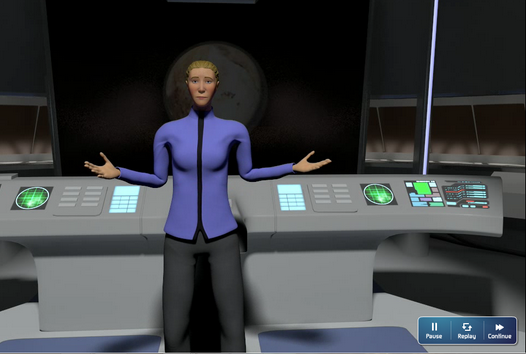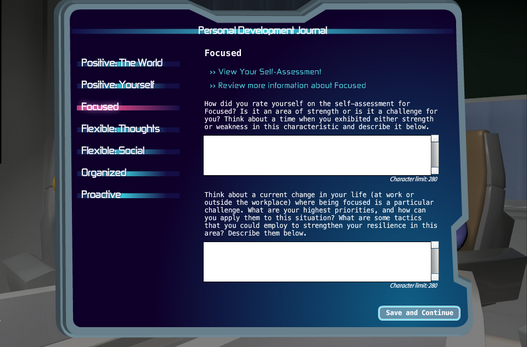Can a Starship Captain Teach Us About Change (and eLearning)?


Have you ever played a video game and found yourself running into the same obstacle over and over again and struggling to overcome it? Maybe you were playing a shoot-em-up game and you always die in the same dark spot. Or maybe Tetris kicks your butt once it gets into high speed without fail. On the other hand there might be a puzzle you can beat in record time every single time you play.
Have you ever stopped to wonder what these games might teach you? Solitaire taught me about my abysmal patience, the Oregon Trail computer game taught me more about the Oregon Trail than a classroom ever did, and the typing games I played in elementary school made me the capable typist I am today. Video games and simulations can teach a lot with a little bit of thought and high quality design.
What if you could take advantage of the unique learning qualities of video games and use them as teaching methods? A great example of this is The Change Game by Resilience Alliance (available on OpenSesame). This fantastical course puts you in the role of a starship navigator operating under a new captain, who has some changes in mind. You get to pick characteristics to reflect your experience and character in reality, and play as an avatar whose goal is to keep the ship functional. You solve problems, learn about change, and create a personal development plan all at the same time. And the best part? It’s fun. If you make too many bad choices, your ship crashes. On the other hand, if you’ve learned and are able to apply what you’ve learned, the ship survives and your crew thrives.
Here is what The Change Game looks like! It’s a stellar example of using gaming as a learning tool.

Explore the seven resilience characteristics while also setting up your character.

Interact with characters on board the starship and help them overcome resistance to the changes the captain is putting into place on board.

After each interaction, reflect on your self-ratings for each of these different characteristics.
Thinking realistically, are you ever going to be responsible for the crew of a starship? Maybe some day, but it does seem fairly far-fetched. The point of the game isn’t the game itself; it’s the lesson it teaches you. Prompts throughout the game encourage you to reflect on your strengths and weaknesses, and the characters you interact with display different types of common reactions to change. This innovative take on learning utilizes the powers of gaming to teach a lesson in a way people enjoy. Upon completing the game, you understand the seven characteristics of personal resilience, and you’ve had an experience you are likely to remember.
Making learning fun seems like a great goal; everyone is on board with that. Unfortunately, when it comes down to it, the time to design such an interactive course is rarely taken. Too often we revert back to classic course design because making a game is a lot of work and requires a lot of creativity. Does a game about a starship navigator come to mind immediately when you think about learning how to handle change? The key is out of the box thinking.
The effort that goes into these courses is worth it for the outcome because learners want to take fun courses and you want content to be memorable. Take an anti-theft course and turn it into a detective game, take a nursing course and turn it into a game requiring learners to interact with simulated patients, or take a hazardous materials course and turn it into a spot-the-mistake game. There are infinite gaming possibilities and if something as cool and exciting as working on a starship can teach us about change resilience, any lesson can be a game with a little bit of creativity.



